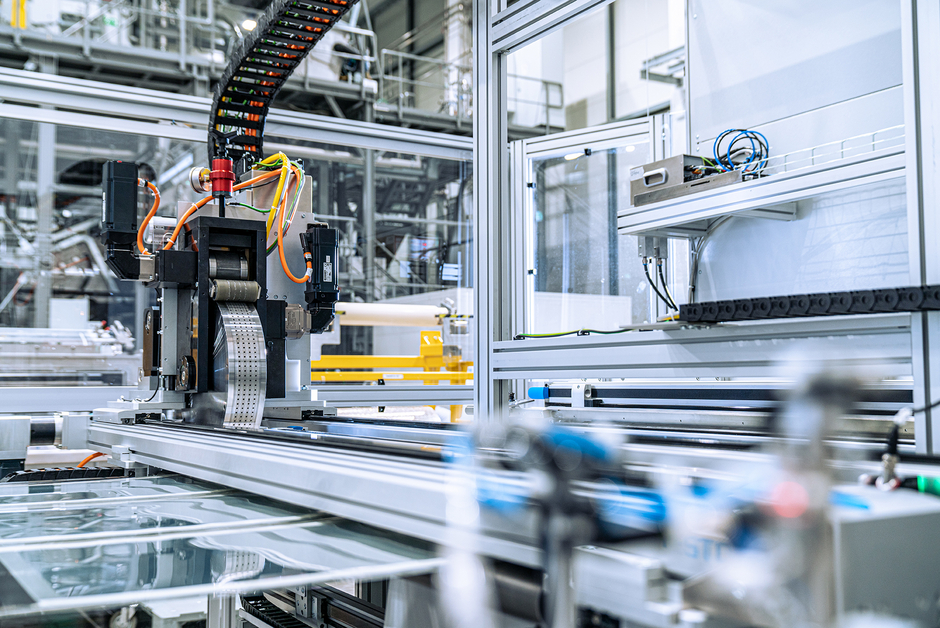The heart of our roll-to-roll process: Thermal evaporation under vacuum
We are the only company in the world to industrialize thermal evaporation under vacuum to produce organic photovoltaics, which is essential to achieve very robust, and highly efficient products. It involves a deposition process in which the various organic materials are heated up to their boiling point and the resulting vapor is deposited under vacuum on a substrate in a homogeneous and well-controlled layer as small as a few thousandths of a millimeter. In our process, multiple layers of different materials are successively evaporated onto the carrier film. Compared to the non-vacuum printing processes also used for producing organic solar cells, the advantages of this process are in the potentially very high yield of the evaporated material, the easy process control and the resulting possible high efficiency of the organic stack. Our processes do not require the use of environmentally harmful carrier gases, nor do cause unwanted secondary processes.
Even though Heliatek is the only company in the world using this process to manufacture OPV products, it is worth noting that the OLED industry is using a similar process of thermal evaporation under vacuum. Nevertheless, Heliatek is the only company that has integrated this process technology into a roll-to-roll production line, enabling high volume, high yield, long lifetime, and high efficiency.

>2 Mio m2
Maximum Capacity Factory/Year (in 2025)
2.6 km Long Rolls (Coils)
1.3 m Wide Rolls (Coils)
Important production steps

In our roll-to-roll production line, rolls with lengths of several km are guided through a sequence of process steps. These rolls are unrolled at the beginning of the process and rolled up again at the end. As the first step, the organic stack of thin layers is evaporated onto a carrier film. This is then followed by an encapsulation process to protect the organic stack from environmental influences. In the last step called the backend finishing, the junction box and cables are attached to the solar film and the backside adhesive is applied to the reverse side. This process results in an organic solar film with outstanding properties that is ready for immediate use and easy to apply: It is ultra-light, flexible, ultra-thin and truly green.